When Merlin began studying gray bats the species was in such precipitous decline that leading experts were predicting extinction. He documented gray bat needs, educated cave owners and sport cavers to value and protect bats, single handedly gained a federal endangered species listing and led recovery efforts. Cavers were encouraged to become respected partners in progress. Today, as a direct result of Merlin’s combined research and positive approaches, there are millions more gray bats than when their extinction was predicted.
Merlin led his first Smithsonian expeditions in 1965-68.
Merlin founded Bat Conservation International (BCI) at a time when bats had just been ranked between rattlesnakes and cockroaches in a national public opinion poll, and traditional conservation organizations were avoiding them as hopelessly unpopular. He hired a half-time assistant and led conservation efforts at night and on weekends from his office at the Milwaukee Public Museum where he held a full-time research position. Progress from his human-centered “like bats or not, we need them” approach dramatically exceeded expectations, forcing him to choose between his job as Curator of Mammals and the needs of BCI for full-time leadership.
In March 1986 Merlin resigned his position at the museum and moved to Austin, Texas to lead BCI full-time. His organization was supported by just a few hundred members, had less than $10,000 in the bank and friends and colleagues thought he had lost his mind in taking such a risk.
Moreover, Merlin had chosen Austin because it had become the world center for negative media stories about bats. A million and a half free-tailed bats had begun moving into newly created crevices beneath the Congress Avenue Bridge, and health officials had warned they were rabid and dangerous. Scary media stories were running rampant and frightened citizens were signing petitions to have the bats eradicated. Nevertheless Merlin believed that this offered a golden opportunity to demonstrate that bats could be safe and highly beneficial neighbors.
He successfully recruited help from community leaders, the news media and even the health department, and within just five years Austin’s bridge bats had become one of the state’s most popular, multi-million-dollar tourist attractions. In the same period, despite the worst recession in Texas history, BCI went from being virtually penniless, with just Merlin and a staff of one, to owning its own two-million-dollar headquarters building and the world’s most important remaining bat cave. Staff had expanded to 17, supported by 12,000 members in 55 countries. But most importantly, clear and measurable progress had been made in reversing age-old negative attitudes as people learned how protecting bats benefits humans, countless partners began protecting millions of bats around the globe.
By the time Merlin left leadership of BCI in 2009, he had educated countless millions of people to a first-time appreciation of bat values. Hundreds of research and conservation projects essential to progress had been funded and long-term protection for thousands of key habitats had been gained. Protected sites included a national park in American Samoa and the most important remaining bat caves of North America, progress that would stand the test of time.
By leaving leadership at BCI Merlin has allowed others to manage while opening new vistas of opportunity for his personal, frontline involvement. The part he loves most is personally promoting bats through his unparalleled combination of photography, lectures and writing, and serving as a mentor and fundraiser for students and home-grown conservation projects wherever they are most needed.
Public speaking highlights from this period included key-note addresses for the 15th International Bat Research Conference in Prague in 2010 and for the Discover Life in America Conference in Gatlinburg, Tennessee in 2014. He also spoke at nine leading institutions in Brunei, Bulgaria, Cuba, Ecuador, Hong Kong and South Africa and served as Honorary Ambassador for the United Nations Year of the Bat Campaign.
He authored a book chapter summarizing historic threats and future challenges for bat conservation (in Bat Evolution, Ecology, and Conservation, RA Adams and SC Pedersen, eds, 2013) and wrote a book titled The Secret Lives of Bats: My Adventures with the World’s Most Misunderstood Mammals (published by Houghton Mifflin Harcourt, October 2015). Finally, Merlin took more than 44,000 new photos of bats, some of which appeared in his article with Ralph Simon in the March 2014 issue of National Geographic magazine.
Growing needs for Merlin’s unique experience and connections in the world of conservation followed him after leaving BCI, and soon he was working harder than ever. With a steady stream of requests for photos and advice found nowhere else, he was persuaded to found a new organization, Merlin Tuttle’s Bat Conservation, in the summer of 2014.
Merlin Tuttle’s Bat Conservation is already providing access to thousands of National Geographic-quality bat photos, now in use by hundreds of educators and conservationists worldwide, as the foundation for exhibits and media stories reaching millions.
In April 2015, he was one of six plenary speakers for the Annual Meeting of the Asia-Pacific Chapter of the Association for Tropical Biology and Conservation, held in Phnom Penh, Cambodia, co-chaired a special session on bats and taught a workshop on cave management for bats. He also spent two weeks assisting with bat conservation efforts in Thailand.
His new book, The Secret Lives of Bats: My Adventures with the World’s Most Misunderstood Mammals, was published by Houghton Mifflin Harcourt in October 2015. Amazon selected it as one of its 10 Best Books of the month in non-fiction, and it gained top reviews in The Wall Street Journal, The New Yorker, The Huffington Post, National Geographic and Nature.
In March 2016, Merlin provided workshop training in bat conservation and photography for participants from four countries through the Trinibats conservation organization in Trinidad. He also took more than 1,300 new photographs, especially featuring bats capturing insect pests and dispersing popular forest fruits. These formed the basis for a major pro-bat story in the island’s leading newspaper and are now in use worldwide, especially by Trinibats in their public education programs.
In July, Merlin spoke at Taiwan’s National Museum of Natural Science, The Endemic Species Research Institute of Taiwan and at the famous Formosan Golden Bats’ Home. During his visit Merlin also provided photo workshop training and took 1,900 new bat photos, including the first ones of Taiwanese bats capturing oriental leafworm moths, one of the most costly crop pests of Australasia. These photos are now available for use in public education in Taiwan and worldwide.
In October, Merlin provided the keynote address for the 46th Annual Symposium of the North American Society for Bat Research, held in San Antonio, Texas. He also provided the keynote address for the society’s Annual Teacher’s Workshop. And in November he was one of 30 environmental leaders invited to participate in a roundtable discussion of Pope Francis’ Encyclical, “On Care of Our Common Home,” at the Vatican. His presentation focused on how to win friends for even the least popular environmental causes.
In December, Merlin completed and submitted a 4,000-word invited manuscript on exaggerated claims of diseases in bats. Assuming acceptance, it will appear in a leading journal in the spring of 2017.
Merlin Tuttle’s Bat Conservation has rapidly become the world leader in responding to exaggerated media stories attempting to link bats to rare but scary diseases from SARS to MERS and Ebola. Such stories are an unfortunate gold mine for headline-grabbing media readership and a bonanza for grants in support of otherwise unlikely-to-be-funded research. Without prompt, credibly documented challenges, these stories have enormous potential to reverse decades of bat conservation progress. People seldom help, and often kill, animals they fear.
Merlin wrote a powerful article, “Give Bats a Break” in the Spring 2017 edition of Issues in Science and Technology, published by the National Academy of Sciences for America’s leading policy makers in science, engineering, and medicine. He also reached an estimated 23 million readers in nine languages through Mongabay’s on-line article, “Bats and viruses: Beating back a bad reputation.” Millions more were reached through his article, “Humans shouldn’t be so scared of bats,” in Slate.
Additionally, in defense of bats, Merlin was interviewed by the BBC, was featured in a very positive story that reached 600,000 Sierra subscribers, and was the primary source for another article in Newsweek.
Merlin’s lectures reached additional thousands, including epidemiologists and virologists at Brazil’s prestigious Oswaldo Cruz Foundation in Rio de Janeiro. In Brazil, he also provided the keynote address at the joint, 2017 meeting of Brazil’s Mammal and Bat Societies, composed of professional colleagues. His inaugural address at the 2017 joint meeting of the Biological Society and the Ecological Society of Chile reached the country’s leading biologists and ecologists.
Back in the U.S., Merlin provided the keynote address for the 2017 meeting of America’s Association of Medical Illustrators and the banquet lecture for the National Speleological Society’s annual meeting. Medical educators and cavers have special relevance to the future of bats.
Between trips, Merlin added more than 2,400 bat photos to the MTBC collection and supervised staff who scanned thousands more from his original slide collection. More than 100 of these were added to the MTBC Photo Gallery. In addition, Merlin directed a film crew to document the critical role of endangered nectar bats in pollinating the agave plants from which all of Mexico’s mescal and tequila are produced (a multi-billion-dollar annual value).
Finally, Merlin researched and authored eight new resource documents, addressing critical bat conservation needs, ranging from misinformation about diseases in bats, and new policies needed to help bats survive WNS, to reducing wind power kills and our dependence on toxic pesticides. These will now provide powerful tools to conservationists everywhere.
Seven speaking engagements ranged from the Ladybird Johnson Wildflower Center and the University of Texas in Austin to the Milwaukee Public Museum in Wisconsin and the annual Cape May Birding Festival in New Jersey. His five radio and television interviews reached audiences in all 50 U.S. states and 108 countries. His Op-ed published in Zeit Online, titled “Stop Publishing Fake News About Bats,” reached an additionally broad international audience. Finally, Merlin’s Opinion Letter, “Fear of Bats and Its Consequences,” was published in the Journal of Bat Research and Conservation, thoroughly documenting the negative impact of exaggerated disease claims against bats over the past 47 years.
Dr. Tuttle additionally published six widely distributed MTBC Bat Flash rebuttals of highly misleading disease-claim articles that appeared in leading media, from The Smithsonian and Washington Post to Reuters, and co-authored a letter published in Nature objecting to biased SARS claims. One of his five new resource articles included a thorough investigation of white-nose syndrome management that revealed urgent needs for a reversal of control policies. Two new videos, produced by a team of staff and colleague volunteers featured Dr. Tuttle explaining importance of bat values and how to accomplish more and longer lasting conservation by winning friends instead of battles.
Six speaking engagements ranged from a lecture on choosing a career at Texas State University to one on the diversity and importance Thai bats at Thailand’s National Museum of Natural History. Others included a talk for an Atlas Obscura event and another for the Texas Department of Transportation media staff. He also was the lead speaker at a cave management workshop and was interviewed for two hour-long Ologies podcasts with Ali Ward and another for Impactor Magazine.
Merlin served as science editor and sole photographer for a 400-page book, Bats: A guide to all species, published in the U.S. by the Smithsonian and in the U.K. by Quarto Publishing. He also produced a new video, titled The Importance of Bats and appeared in videos produced by Atlas Obscura and the Texas Department of Transportation on the popularity of bat watching in Texas. He produced resources on energy, climate change, and WNS and three Bat Flash responses to exaggerated media claims involving bats.
He led a bat cave survey in Mammoth Cave National Park and member field trips to Big Bend National Park and to Thailand. The Thai trip was a working trip, providing cave management advice, photographing new bats, and being filmed for a video on the famous Khao Chong Pran Cave conservation story.
COVID restrictions and negative media coverage combined to make a very tough year. Requests for assistance in allaying public fear more than doubled Merlin’s workload. His invited op-ed, titled “A Viral Witch Hunt”, was published in Issues in Science and Technology and was translated into Spanish, Chinese, Romanian, and Hungarian. His webinar, titled “Are Bats Really to Blame for the COVID-19 Pandemic,” hosted by the U.S. Consortium for Science, Policy, and Outcomes, reached a record worldwide audience of public health decision makers. Merlin also reached large national and international audiences through eight additional webinars, six podcasts, and eight blog responses to misleading bat articles. He further collaborated with the U.S. National Park Service to produce a three-minute video, “Bat Fears in Perspective” and provided much needed advice on how to effectively defend bats from unnecessary fear.
In his last pre-COVID public lecture, Merlin introduced bats to enthusiastic guests of the Harmony Hotel in Costa Rica. He additionally prepared a 30-minute PowerPoint program for future Harmony events and taught their staff how to give bat tours and build artificial roosts.
He further testified via Zoom before Ecuador’s highest court on behalf of protection for critical bat habitat, was featured in a 1.5-hour French documentary on his bat conservation efforts and reached millions through media interviews. Needs for defending bats against scary speculation were at an all-time high, and Merlin’s well-researched responses provided a firm foundation for conservationists worldwide.
Media headlines worldwide speculated bats to be dangerous sources of scary diseases, including Ebola, and even the COVID-19 pandemic. Much needed education and field work were put on indefinite hold. And fearful people began eradicating bats. Amid this disaster, Merlin’s photo collection, played a key role in helping conservationists, educators, and publishers world-wide to set the record straight. Merlin put needless fear in perspective, as requests for help more than tripled in just a few months.
COVID-19 concerns forced cancellation of most face-to-face speaking engagements, Merlin’s bat photography, and all of MTBC’s field training workshops. Nevertheless, thanks to outstanding support from concerned colleagues and members, we were able to provide a wide variety of webinars, YouTube videos and other educational materials. A single YouTube video by Ze Frank, promoting Merlin’s efforts on behalf of bats, reached over a million viewers. And another we produced for use at Inner Space Cavern, a Texas tour cave, is reaching more than 300,000 visitors annually. In November, Merlin was finally able to provide a half-day workshop face-to-face at the 2021 National Cave and Karst Symposium in San Marcos, Texas. He demonstrated the key importance of restoring and protecting caves of historically critical importance.
Merlin and MTBC’s Program Coordinator, Danielle Cordani, additionally took advantage of a wave of interest in bat houses. They conducted a survey of discoveries made by leading bat house users and wrote a book, The Bat House Guide. The book puts values and fears of bats in perspective and provides the most up-to-date instructions on building and using bat houses. It is in press with a leading publisher, slated for wide distribution in the spring of 2022. We hope it will provide a timely hedge against groundless fear.
As Covid-19 restrictions eased, Merlin resumed lecturing, helped with training workshops, and provided a wide variety of local consultations from Texas to Costa Rica, Zambia, and South Africa. He provided conservation advice and spoke at the Harmony Hotel in Costa Rica, helped organize and lead research and a workshop on how to enhance bat pest control in Texas pecan orchards, and held two workshops in Zambia’s Kasanka National Park. In South Africa, he served as the featured speaker for a fundraising event in support of a new bilingual children’s bat book to be widely distributed in school libraries. And he also spoke to students and faculty at the University of the Free State Qwa Qwa Campus where he advised graduate students on research projects and met with conservation leaders to discuss their goals. During his travels he photographed additional species that had yet to be covered in our collection, including his first photos of a Damara woolly bat roosting in a weaverbird nest. Merlin also spoke to the Austin Animal Advisory Commission about what could be done to better protect the famous Congress Avenue Bridge Bat colony. His much anticipated book, The Bat House Guide, co-authored with Danielle Cordani, was published, and it debuted to great success and rave reviews.
Much of Merlin’s time this year was focused on teaching his conservation skills to MTBC staff and associates. Thanks in large part to MTBC’s Outreach and Archives Manager, Teresa Nichta, Merlin reached his largest audience ever in 2023, appearing on The Joe Rogan Experience, SXSW, Arc of Appalachia’s Wildflower Pilgrimage, Nature Guys podcast, including over 20 others. The total reached was approximately 100 million in more than 70 countries!
In Costa Rica, he provided another evening program for the Harmony Resort and subsequently, worked with his Operations Manager, Duncan Hicks, to take more than 2,100 new photos, including many of rare bats that will be used as part of a new Spanish language program for use in Costa Rica by colleagues and naturalist guides. Merlin additionally co-led a workshop with MTBC trustee, Troy Swift, and our Conservation Program Coordinator, Danielle Cordani, helping pecan growers test bat houses for pest reduction.
Merlin joined three other international conservation experts at Mozambique’s Gorongosa National Park to lead a week-long conference titled, “Conservation of Neglected Taxa.” While in Mozambique, Archive and Communication Coordinator, David Shuler, and volunteers Madelline Mathis and Mindy Vescovo, helped Merlin take many photos including his first of a mother Sundevall’s leaf-nosed bat carrying her newborn pup while drinking in flight.
He issued a call to action with “Bat Flash! Distorted Truth that Threatens Bats, People, and Science,” and his “Response to a Misleading Scientific American Bat Story” reminded news outlets and scientific magazines alike that there is no historical support for claims that close association with bats increases risks of disease outbreaks in humans or other animals.
Thanks to a generous gift from MTBC’s first director, Jeff Acopian, a new annual scholarship was named in honor of Antoniya Hubancheva, the recipient of our first student scholarship award.
To ensure that MTBC always has the resources required to provide conservation leadership, we’ve begun building an endowment, starting with the bequest of Merlin’s most valuable possession: his famous photo collection. MTBC’s growing staff is passionately devoted to securing and sharing his legacy.
A film crew began following Merlin to locations of his most important early successes in the architecture of the gray bat’s amazing recovery from predicted extinction to a population of millions. From key locations in Tennessee, Kentucky, and Alabama, Merlin was filmed documenting key strategies and partnerships that led to one of the most dramatic successes in conservation history. This upcoming film will powerfully illustrate Merlin’s science-based, “win friends, not battles” approach that united diverse groups, and turned bats’ onetime enemies into their staunchest allies. Merlin believes that this model could lead to surprisingly rapid recovery of other critically endangered species. His story provides an invaluable example of the power of practical, people-oriented conservation, hopefully inspiring future generations to accomplish even more.
Merlin and the MTBC team began 2024 with a conservation trip to Thailand, revisiting Khao Chong Phran Cave. This location is one of Merlin’s proudest conservation successes. While in Thailand, MTBC supported local conservation efforts, captured and photographed painted bats, and observed bumblebee bats and flying foxes. Trip participant and guest writer, Brynn Tarnowsky, chronicled the experience in a five-part blog series. This series highlights the beauty of Thailand’s bat species and the role Buddhist monks play in conserving these bats’ habitat.
Once back from Thailand, Merlin was featured on the Nocturne Podcast, where he was dubbed “the Indiana Jones of bat conservation.” He shared insights from his lifelong work protecting bats around the globe.
Over the summer, Merlin collaborated with artists Jiabao Li, Matt McCorkle, and Botao Hu on Nocturnal Fugue, an innovative art and conservation project showcased at the Contemporary Museum of Austin during the Fuzebox Festival.
Merlin continued to champion evidence-based conservation by issuing a Bat Flash addressing myths and reinforcing factual conservation messaging: “Bat Flash: Countering Misinformation and Championing Evidence-Based Science.”
In July, Merlin hosted a virtual Q&A session for MTBC followers and members, answering questions and sharing updates on MTBC’s conservation efforts. Additionally, MTBC’s Communications Coordinator, Katie, worked with Merlin to author “Nature’s Favorite Pollinators,” an updated resource post highlighting bats’ vital role in pollination.
Merlin stayed very active heading into the fall season, expanding his efforts internationally, working on conservation field projects in Cuba and Costa Rica. In Cuba, he joined Proyecto Cubabat to conduct bat surveys and train photographers in specialized bat photography techniques. The best images from the workshop were donated to Proyecto Cubabat for educational programs. Merlin worked closely with MTBC intern, Alyson Yates, to give MTBC members an inside look of the trip.
In Costa Rica, Merlin collaborated with cinematographer Skip Hobbie’s team to document bats’ ecological roles using high-speed cameras. Despite torrential rains and floods, the team successfully captured stunning footage for “Bat City,” an upcoming educational film highlighting the importance of Austin’s urban bat population.
In between international conservation trips, Merlin continued engaging with the public through a sold-out presentation at the Aquarium of the Pacific in Long Beach, California, and a TEDx talk at UT Austin, where he emphasized the crucial role of bats in global ecosystems and promoted positive approaches to conservation.
At the North American Symposium for Bat Research (NASBR) in Guadalajara, Mexico, Merlin mentored several graduate students working on bat conservation projects.
With every trip, collaboration, and public engagement, Merlin continued to train his MTBC team in the importance of practical, evidence-based conservation with positive approaches that unite people and protect bats.
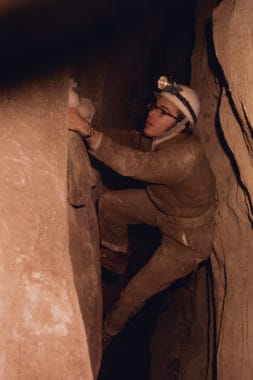
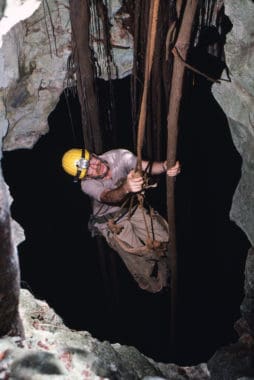
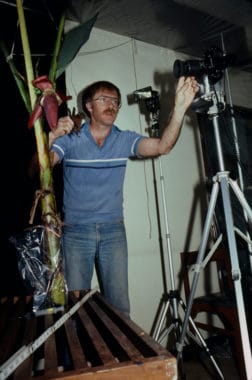
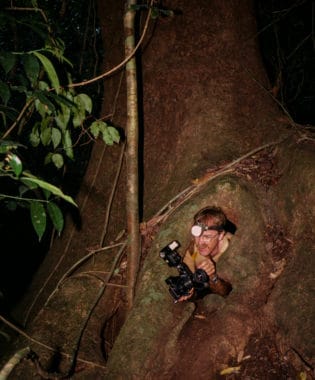
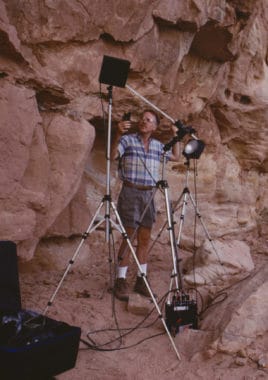
2024 © Merlin Tuttle’s Bat Conservation. All rights reserved.
Madelline Mathis has a degree in environmental studies from Rollins College and a passion for wildlife conservation. She is an outstanding nature photographer who has worked extensively with Merlin and other MTBC staff studying and photographing bats in Mozambique, Cuba, Costa Rica, and Texas. Following college graduation, she was employed as an environmental specialist for the Florida Department of Environmental Protection. She subsequently founded the Florida chapter of the International DarkSky Association and currently serves on the board of DarkSky Texas. She also serves on the board of Houston Wilderness and was appointed to the Austin Water Resource Community Planning Task Force.
Michael Lazari Karapetian has over twenty years of investment management experience. He has a degree in business management, is a certified NBA agent, and gained early experience as a money manager for the Bank of America where he established model portfolios for high-net-worth clients. In 2003 he founded Lazari Capital Management, Inc. and Lazari Asset Management, Inc. He is President and CIO of both and manages over a half a billion in assets. In his personal time he champions philanthropic causes. He serves on the board of Moravian College and has a strong affinity for wildlife, both funding and volunteering on behalf of endangered species.